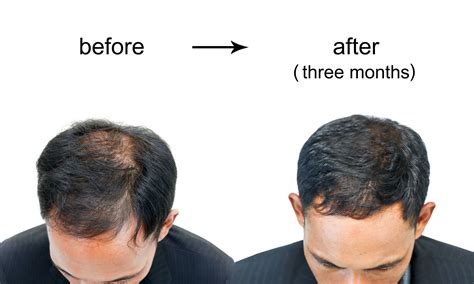Understanding Hair Loss on Top of Head
Hair loss on top of head, also known as alopecia, is a common problem affecting millions of people worldwide. It can be a distressing condition, affecting both physical appearance and self-esteem. This guide aims to provide a comprehensive understanding of hair loss on top of head, including its causes, treatments, and preventive measures.

Causes of Hair Loss on Top of Head
Hair loss on top of head can be caused by various factors, including:
Genetic Causes
- Androgenetic alopecia, also known as male-pattern baldness or female-pattern hair loss, is a common genetic cause of hair loss. It is caused by a hormone called dihydrotestosterone (DHT), which shrinks hair follicles over time.
- Alopecia areata is an autoimmune condition in which the body attacks its own hair follicles, leading to hair loss in round or oval patches.
Medical Conditions
- Thyroid disorders, such as hypothyroidism or hyperthyroidism, can disrupt hair growth and lead to hair loss.
- Hormonal changes, such as those associated with pregnancy, childbirth, or menopause, can temporarily cause hair loss.
- Certain medications, such as chemotherapy medications, blood thinners, and antidepressants, can have hair loss as a side effect.
Lifestyle Factors
- Stress and anxiety can trigger temporary hair loss.
- Poor nutrition, particularly deficiencies in iron, vitamin B12, and biotin, can weaken hair follicles and contribute to hair loss.
- Excessive styling techniques, such as tight hairstyles, chemical treatments, or heat styling, can damage hair and lead to breakage or hair loss.
Treatments for Hair Loss on Top of Head
There are several treatment options available for hair loss on top of head, depending on the underlying cause.
Hair Regrowth Medications
- Minoxidil (Rogaine) is a topical medication applied to the scalp that promotes hair growth by stimulating blood flow to hair follicles.
- Finasteride (Propecia) is an oral medication for men that blocks the production of DHT, helping to prevent further hair loss and promote hair regrowth.
Hair Transplantation
Hair transplantation involves surgically removing healthy hair follicles from another area of the scalp or body and transplanting them to the balding area. It is a permanent solution for hair loss but can be expensive.
Laser Therapy
Low-level laser therapy (LLLT) uses laser light to stimulate hair follicles and promote hair growth. It is a non-invasive and painless treatment that can be done in a clinic or at home.
Platelet-Rich Plasma (PRP)
PRP therapy involves injecting platelet-rich plasma into the scalp to stimulate hair growth. PRP contains growth factors that promote tissue repair and may help improve hair follicle function.
Preventive Measures for Hair Loss on Top of Head
While some causes of hair loss are unavoidable, there are steps you can take to prevent or minimize hair loss on top of head:
- Manage stress levels through exercise, meditation, or yoga.
- Ensure a healthy diet rich in iron, vitamin B12, and biotin.
- Avoid excessive styling techniques and use gentle hair care products.
- Get regular checkups to identify and treat underlying medical conditions that may contribute to hair loss.
Common Mistakes to Avoid in Treating Hair Loss
- Using ineffective hair loss products or treatments without consulting a medical professional.
- Over-using hair styling tools or products that damage hair.
- neglecting underlying medical conditions that may be causing hair loss.
- Expecting immediate results from hair loss treatments. Hair growth takes time and consistency.
Frequently Asked Questions (FAQs) about Hair Loss on Top of Head
1. Can hair loss on top of head be reversed?
In some cases, hair loss on top of head can be reversed if the underlying cause is identified and treated promptly. However, it may not be possible to restore all hair loss, especially if it is related to genetics.
2. Is hair transplantation the only permanent solution for hair loss?
Hair transplantation is currently considered the most permanent solution for hair loss. However, it is not a cure and may not be suitable for everyone.
3. How long does it take to see results from hair loss treatments?
The time frame for seeing results from hair loss treatments varies depending on the treatment and the individual. Most treatments require consistent use for several months before noticeable results are observed.
4. Is hair loss more common in men or women?
Androgenetic alopecia, the most common type of hair loss, affects more men than women. However, women can also experience hair loss due to other factors such as hormonal imbalances, thyroid disorders, or autoimmune diseases.
5. Can stress cause hair loss on top of head?
Yes, stress can trigger a type of temporary hair loss called telogen effluvium. During periods of intense stress, hair follicles enter a resting phase and shed hair prematurely.
6. What is the best home remedy for hair loss on top of head?
There is no single best home remedy for hair loss on top of head. However, some natural remedies like scalp massages, using essential oils, or applying onion juice may provide anecdotal benefits.
7. Can hair loss on top of head be prevented?
While not all causes of hair loss can be prevented, maintaining a healthy diet, managing stress, and avoiding damaging hair styling practices can help minimize hair loss.
8. When should I see a doctor about hair loss on top of head?
If you experience sudden or significant hair loss, it is important to consult a doctor to determine the underlying cause and receive appropriate treatment.
Conclusion
Hair loss on top of head can be a concerning condition, but it is important to remember that there are numerous treatment options available. By understanding the causes, treatments, and preventive measures, individuals can proactively address hair loss and improve their self-confidence. Consulting a medical professional is always recommended to determine the most effective treatment plan for each individual case.
